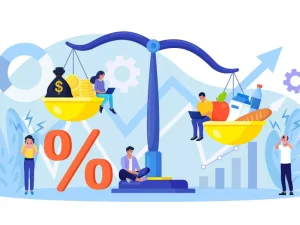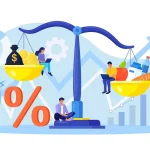In today’s hyper-competitive business environment, companies are constantly seeking ways to innovate, adapt, and sustain growth. While many organizations focus on streamlining operations, minimizing conflicts, and promoting harmony, there is a lesser-discussed concept that can dramatically influence success: strategic friction. At first glance, friction may seem counterintuitive to growth. However, when applied thoughtfully, it can act as a catalyst for creativity, innovation, and long-term competitiveness.
Understanding Strategic Friction
Strategic friction refers to the deliberate introduction of tension, disagreement, or challenge within a company to spark critical thinking and better decision-making. Unlike ordinary workplace conflict, which is unproductive and damaging, strategic friction is purposeful, controlled, and constructive. It encourages employees and leadership to question assumptions, explore alternative solutions, and test the robustness of their strategies.
The Conceptual Roots of Strategic Friction
The concept draws from several areas of management theory:
- Contrarian Thinking: Encouraging dissent and alternative perspectives can prevent groupthink and blind spots in decision-making.
- Healthy Debate: When structured appropriately, debate stimulates deeper analysis and stronger outcomes.
- Controlled Risk-Taking: Introducing friction allows organizations to simulate real-world challenges and evaluate resilience before crises arise.
Strategic friction is not about creating chaos or conflict for its own sake—it is about fostering a culture of thoughtful challenge that enhances the organization’s agility and effectiveness.
Why Great Companies Need Strategic Friction
Many of the world’s most successful companies, from Apple to Amazon, thrive not only because of operational efficiency but because they embrace tension and challenge within their culture. There are several compelling reasons why strategic friction is essential:
1. Prevents Complacency and Groupthink
Organizations that avoid conflict at all costs often fall into the trap of groupthink, where ideas are accepted without scrutiny. Strategic friction ensures that employees:
- Question assumptions rather than accept the status quo
- Identify potential risks early in the planning process
- Avoid costly mistakes caused by blind consensus
By introducing structured disagreement, companies remain vigilant and proactive rather than reactive.
2. Sparks Innovation and Creativity
Innovation rarely emerges in environments of complete agreement. Friction stimulates diverse thinking, forcing teams to examine challenges from multiple angles. Some ways it encourages innovation include:
- Cross-functional debates: Different departments challenge each other’s assumptions, leading to breakthrough ideas.
- Prototyping and testing: Friction inspires teams to develop multiple solutions and select the best one.
- Constructive conflict: Encourages open dialogue, where differing perspectives lead to creative problem-solving.
Without friction, organizations risk becoming stagnant, producing incremental improvements rather than disruptive innovations.
3. Strengthens Decision-Making
Strategic friction acts as a stress test for decisions. By encouraging debate and disagreement before finalizing choices, companies:
- Identify potential pitfalls or unintended consequences
- Refine strategies to be more resilient
- Enhance the quality of decisions by considering multiple viewpoints
This approach ensures that decisions are not made in isolation or based solely on hierarchy but are robust and well-analyzed.
4. Enhances Employee Engagement
Ironically, strategic friction can lead to higher employee satisfaction and engagement. When employees feel their opinions are valued—even if they challenge leadership—they experience:
- A sense of ownership and influence in organizational decisions
- Increased motivation to contribute and innovate
- A culture of transparency and trust
Organizations that suppress dissent often face disengaged employees who feel undervalued or ignored.
5. Drives Organizational Adaptability
In a world characterized by rapid change, companies that can adapt quickly have a competitive advantage. Strategic friction encourages:
- Continuous learning: Teams constantly refine processes and strategies based on internal feedback
- Scenario planning: By challenging assumptions, companies prepare for multiple outcomes
- Resilience under stress: Exposure to controlled tension equips teams to handle real-world crises effectively
Companies that embrace friction are not only more innovative but also more agile in responding to unforeseen challenges.
6. Promotes a Culture of Excellence
Excellence is often born out of rigorous debate and critical evaluation. Strategic friction helps companies:
- Set higher standards by questioning mediocrity
- Encourage constructive feedback rather than complacency
- Foster a culture where continuous improvement is celebrated
This culture of excellence ensures that the organization does not settle for “good enough” but consistently pushes for superior outcomes.
How to Implement Strategic Friction in Your Organization
Introducing friction without causing dysfunction requires deliberate planning and cultural sensitivity. Here are some effective strategies:
Establish Clear Boundaries
Friction should be purposeful, not personal. Companies must clearly define:
- Acceptable behavior during disagreements
- Boundaries for constructive debate
- Guidelines for conflict resolution
This ensures that friction enhances performance rather than creating toxic environments.
Encourage Diverse Perspectives
Diversity is essential for friction to be productive. Organizations should:
- Include employees from different backgrounds, functions, and seniority levels
- Encourage open expression of ideas, even if they challenge leadership
- Rotate team members to gain fresh perspectives on recurring problems
Promote Psychological Safety
Employees must feel safe to voice dissent without fear of retribution. Leaders can foster psychological safety by:
- Listening actively to differing opinions
- Rewarding constructive criticism
- Modeling humility and openness to feedback
Use Structured Methods
Structured approaches help convert friction into tangible results:
- Devil’s advocate sessions: Assign a team member to challenge every decision
- Scenario planning workshops: Test strategies under different assumptions
- Feedback loops: Encourage iterative evaluation and improvement
Align with Organizational Goals
Friction must support, not undermine, company objectives. Leaders should ensure that:
- Disagreements are aligned with strategic priorities
- Teams focus on problem-solving rather than personal conflicts
- Friction is used to explore opportunities rather than derail progress
Examples of Strategic Friction in Action
Apple
Apple’s product development culture famously incorporates internal tension. Teams are encouraged to challenge assumptions, question prototypes, and debate features rigorously. This friction ensures that products like the iPhone meet the highest standards of innovation and usability.
Amazon
Amazon’s leadership principles emphasize disagree and commit, where employees are encouraged to challenge ideas during decision-making but commit fully once a direction is chosen. This approach blends friction with alignment, driving innovation and accountability.
Pixar
Pixar uses “Braintrust” meetings to create friction around creative decisions. Directors and team members critique each other’s work openly, fostering a culture where constructive tension leads to superior storytelling and innovation.
Potential Challenges and How to Overcome Them
While strategic friction offers immense benefits, it is not without risks:
- Escalation into personal conflict: Clear boundaries and psychological safety are essential.
- Decision paralysis: Structured methods ensure that debate leads to timely action.
- Resistance from leadership: Training and cultural reinforcement can help leaders embrace dissent as a strength.
By anticipating these challenges, companies can harness friction effectively without compromising culture or performance.
Measuring the Impact of Strategic Friction
To ensure friction is delivering value, organizations can track:
- Innovation metrics: Number of new ideas generated and implemented
- Employee engagement: Surveys measuring psychological safety and satisfaction
- Decision quality: Outcomes of strategic initiatives and risk mitigation
- Adaptability: Response time to market changes or crises
Regular assessment allows companies to refine their approach and maintain a healthy balance between friction and harmony.
Conclusion
Strategic friction is a powerful tool for driving growth, innovation, and resilience. By embracing controlled tension, organizations can prevent complacency, strengthen decision-making, enhance employee engagement, and foster a culture of excellence. The key lies in implementing friction thoughtfully, ensuring it is purposeful, structured, and aligned with organizational goals. Great companies don’t just tolerate friction—they strategically cultivate it to secure their competitive edge in an ever-evolving business landscape.
Frequently Asked Questions (FAQ)
1. What is the difference between strategic friction and workplace conflict?
Strategic friction is controlled, purposeful, and constructive, aimed at improving decision-making and innovation. Workplace conflict is often personal, unstructured, and destructive, leading to reduced morale and productivity.
2. How can leaders encourage strategic friction without causing disruption?
Leaders can set clear boundaries, foster psychological safety, encourage diverse perspectives, and use structured debate methods to ensure friction remains productive.
3. Can small companies benefit from strategic friction?
Absolutely. Even small organizations can leverage friction to improve innovation, decision-making, and adaptability by cultivating a culture of open discussion and critical feedback.
4. How do you measure the success of strategic friction?
Success can be measured through innovation metrics, employee engagement scores, decision quality, and organizational adaptability in responding to change.
5. Is there a risk of friction slowing down decisions?
While excessive friction can cause delays, structured approaches like devil’s advocate sessions or scenario planning ensure that debate leads to timely, informed decisions.
6. How does strategic friction improve employee engagement?
When employees feel their opinions are valued and disagreements are welcomed constructively, they experience greater ownership, motivation, and connection to organizational goals.
7. Can strategic friction be applied in remote or hybrid teams?
Yes. Virtual collaboration tools, structured feedback sessions, and open communication channels can foster strategic friction even in remote or hybrid work environments.


















